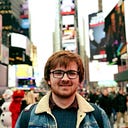The Anti-Mask League of 1919
As England moves to make face masks mandatory, the similarities to a pandemic a century ago continue to grow
Over the last few months, dozens of comparisons have been made between the Spanish Flu pandemic of 1918–19 and the present day coronavirus outbreak. Yet as well as the similarities between the coverage and effects of the diseases, the measures to prevent the spread have been compared. Moreover, the resistance to pandemic measures are also being mirrored.
The Spanish Flu was named thus as a result of Spain, who were neutral during the First World War, breaking the news of its spread as nations involved in the fighting moved to suppress the news. It was the war, with its high volume of personnel being shipped around the world, which helped to accelerate the spread.
In the USA, the first recorded case was that of an Army Private stationed in Kansas in March 1918. Despite suppressing the news of the outbreak initially, the war made a lot of Americans want to follow guidelines and wear protection out of a sense of national duty. To not wear a mask in public was seen as an insult towards the USA and the war effort.
However, after the war ended in November 1918, it became harder to convince people to wear the protection. A group of these people created the Anti-Mask League in San Francisco.
In the city, a initial masking order began in October 1918 and ended shortly after the end of the war. There were joyous scenes and, as one newspaper reported, ‘a whistle blew and people ran out onto the streets to celebrate.’
However, the happiness was short lived. After a spike in cases in December, the second order was put in place in January 1919. It was during this time that, due to there now being no need to wear the masks to keep soldiers safe, the resistance to wearing them increased.
The first meeting of the anti mask representatives was attended by roughly 4,5000 people. They demanded that the forced restrictions be lifted, and it was a motion which was supported by city supervisor, Charles Nelson, who declared the mask-wearing ordinance “an infringement of our personal liberty” and an affront to the “spirit of a truly democratic people.”
People caught out in public without a mask, dubbed ‘mask slackers’ were arrested and faced fines or jail time. They were charged with a breach of the peace and were deemed to be endangering others.
Studies and research since has unveiled that, unlike in 2020, the main reasons for not wearing a mask involved personal comfort rather than disputing the science behind them or their effectiveness against the disease.
Despite the turnout, the anti mask sentiment was not widespread. Although the resistance to wearing masks increased after the war, the majority of the USA followed the rulings. San Francisco was the most prominent city to have an organised ‘anti-mask’ movement, and once the pandemic burned itself out, 45,000 of its residents had been infected.
Although the Spanish Flu was more deadly and infectious than coronavirus, it serves as a lesson in history on how the resentment to wearing masks can be dangerous during times of virus pandemics.
Even 100 years on, the critiquing of proven science still exists in society and threatens to make sure the coronavirus continues to spread and remain amongst us for months to come.
